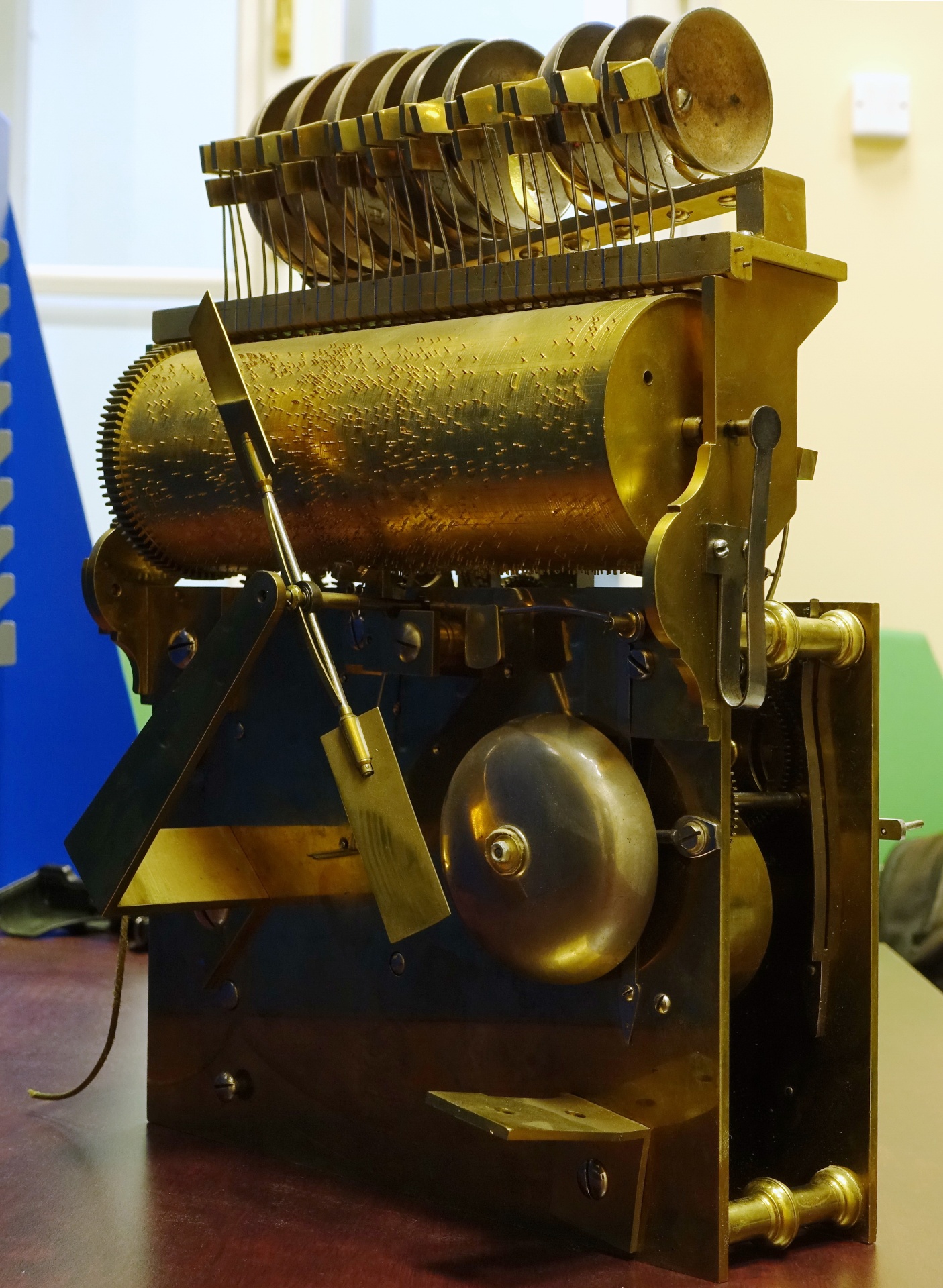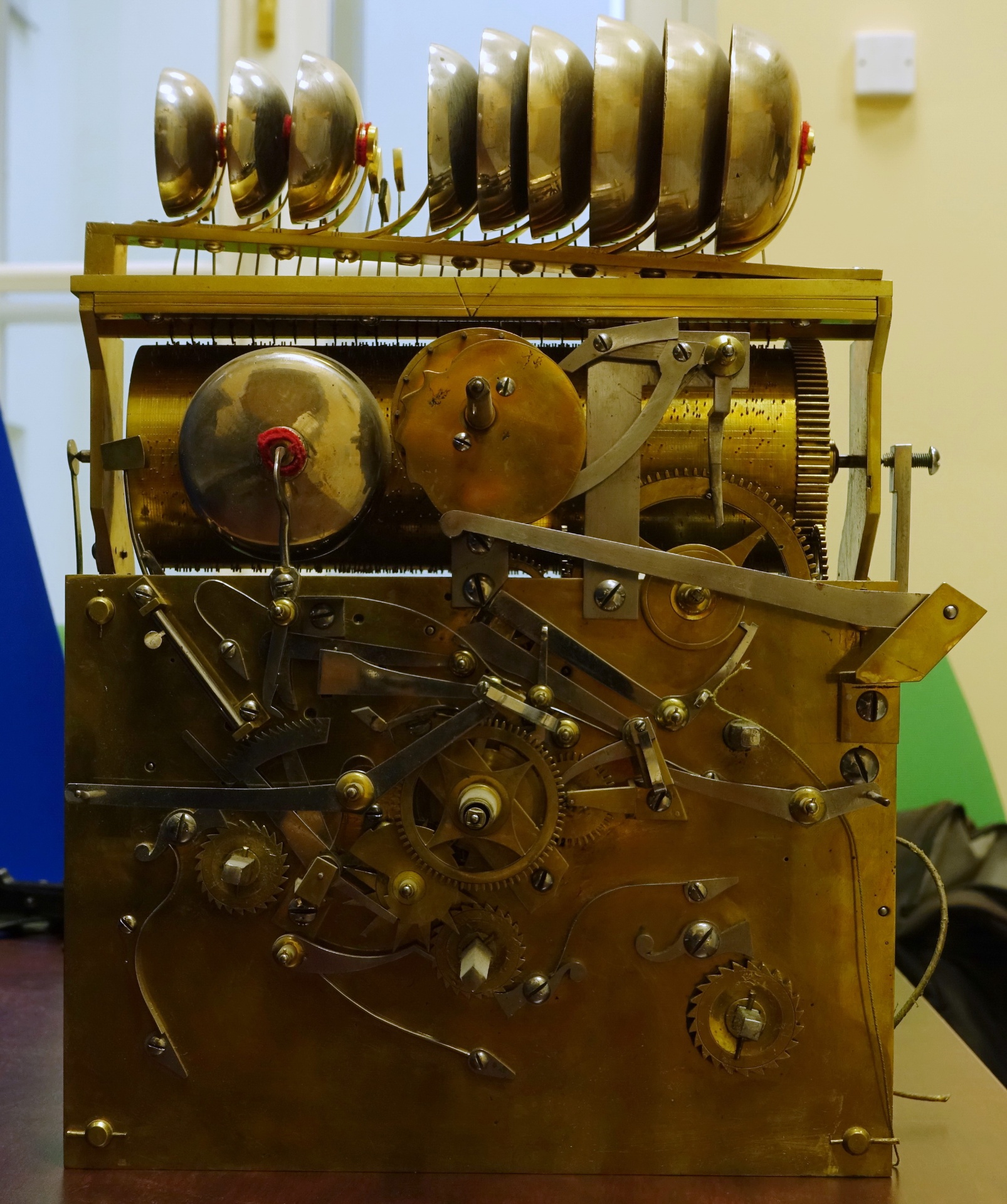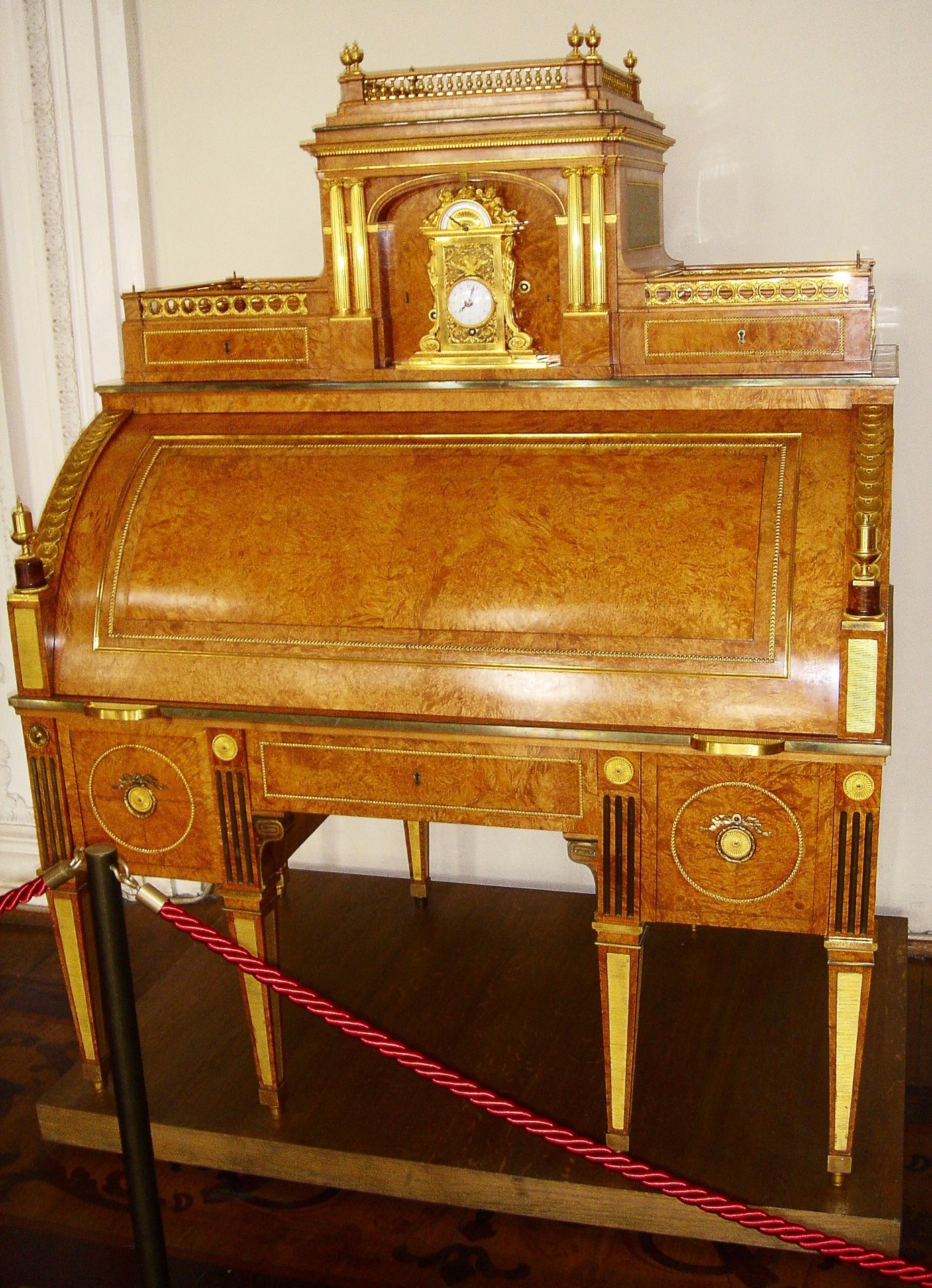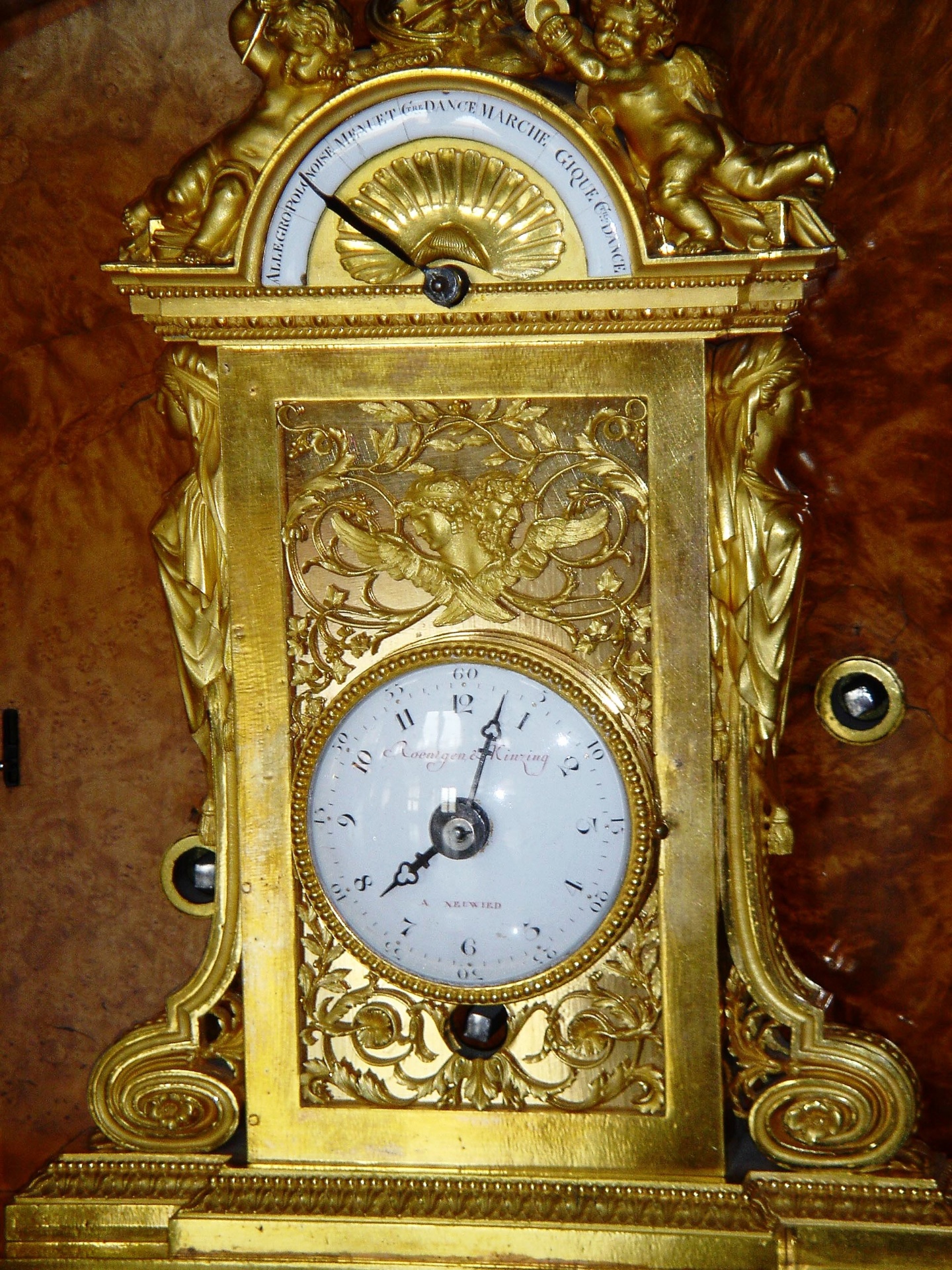Study and Restoration of a Bureau with a Musical Mechanism made by David Roentgen and Peter Kinzing
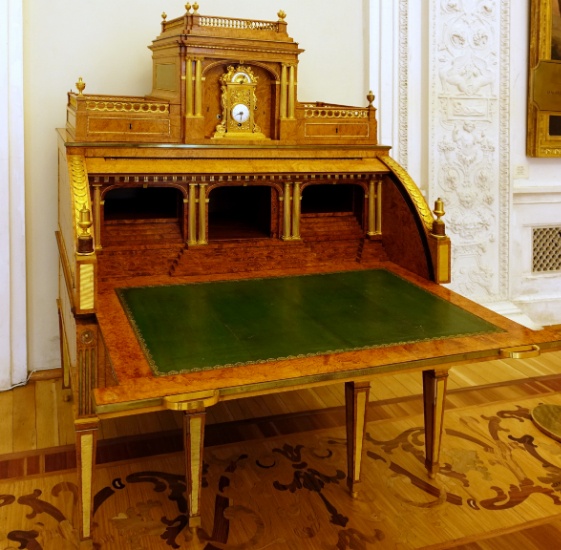 The bureau with a musical mechanism Germany. 1786. David Roentgen (body), Peter Kinzing (mechanism). Wood, bronze, steel, brass, enamel; gilding. 164 × 178 × 89 cm
The bureau with a musical mechanism Germany. 1786. David Roentgen (body), Peter Kinzing (mechanism). Wood, bronze, steel, brass, enamel; gilding. 164 × 178 × 89 cmThis bureau was delivered to Catherine II’s court in 1786 as part of the second consignment of furniture commissioned by the Empress from the celebrated cabinetmaker David Roentgen. It stood out from the other items above all on account of its veneer, which is made from amboyna, an expensive and rarely used variety of wood. Besides that, the bureau includes something unique among Roentgen’s pieces – a small upper cupboard incorporating a clock decorated with bronze sculpture and ornamentation with an intricate finish.
 The bureau with a musical mechanism. Details
The bureau with a musical mechanism. DetailsDavid Roentgen’s works are traditionally numbered among the masterpieces of 18th-century furniture-making. Each of his pieces is a source of pride for the owner. And when Roentgen collaborated with another no less celebrated craftsmen – the mechanic and clockmaker Peter Kinzing – the value of their joint creations increased many times over. The Hermitage can justly boast of having one of the world’s finest collection of Roentgen furniture, including pieces fitted with Kinzing’s ingenious contrivances.
Kinzing’s mechanisms are marked by a high standard of finishing as well as an integral construction with musical mechanism and timepiece combined in one indivisible block. The clock mechanism has a spring drive, an anchor escapement and strikes the hours on a little bronze bell. The musical mechanism is also spring driven and performs seven tunes on a set of ten bells.
As a rule, pieces of furniture made by Roentgen and Kinzing are fitted with a musical mechanism that plays an organ or dulcimer. The Hermitage possesses four examples of these. The musical mechanism incorporated into the 1786 bureau is, however, unusual for the pair’s output: here the tunes are performed on a carillon of ten small bells. And each of the bells has three hammers, making thirty in all. The first hammer is the main one; the second is used, in keeping with established practice, to rapidly repeat a note, while the third has a felt insert to damp the bell. This refinement allows the performance of far more complex and polished melodies. It is a great rarity and, as far as can be determined, there are no comparable devices in Russia. Experience shows that, in comparison with mechanical organs or dulcimers, devices using carillons tend to be longer-lived and hardly ever go out of tune. So, it will be possible to set the mechanism to work continuously on an automatic basis (once an hour or every three hours).
The restoration will allow us to return to the White Hall, where other creations of David Roentgen are on display, the sound of one more musical automaton different from the rest.
The restorers will be faced with a large number of difficult tasks, including deciphering the tunes recorded on the barrel and designing and making the lost hands (hour, minute and tune selector).
The restoration of the mechanism will entail the following stages:
- cleaning the parts of dirt, traces of corrosion and dried oil
- restoration of damaged and worn parts of the mechanism
- deciphering the tunes recorded on the barrel
- designing and making the lost hands (hour, minute and tune selector)
- assembly and adjustment of the mechanism
- making winding keys
- making a kinematic diagram
- producing a video about the device, the restoration and operation of the mechanism.
A working group of members of the State Hermitage staff has been formed for the restoration of the bureau:
- Tatiana Semionova – scholarly supervisor of the project, Keeper of Furniture, senior researcher in the Department of Western European Applied Art
- Mikhail Guryev – head of the restoration group, head of the Laboratory for the Scientific Restoration of Timepieces and Musical Mechanisms
- Valentin Molotkov – senior researcher in the Laboratory for the Scientific Restoration of Timepieces and Musical Mechanisms
- Oleg Zinatullin – artist constructor of the highest category in the Laboratory for the Scientific Restoration of Timepieces and Musical Mechanisms
- Evgeny Fedorov, Yu. Selezneva, A. Semionova – coordination group from the State Hermitage Development Department
The work will be carried out in 2019.
